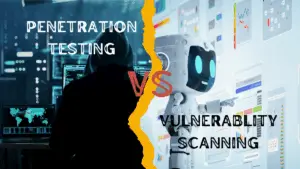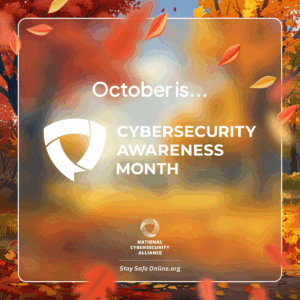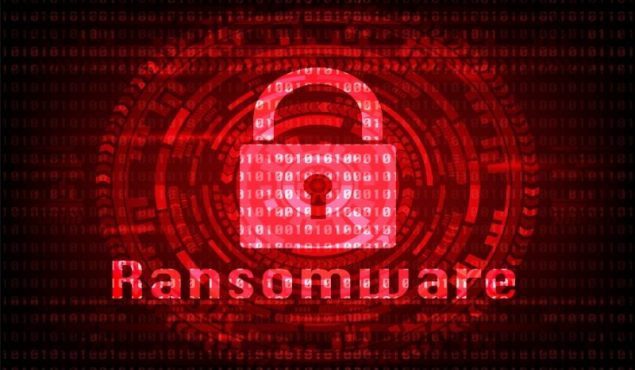The Escalating Ransomware Crisis
The ransomware threat landscape has evolved from a nuisance into a global economic crisis, rendering traditional ransomware defense strategies obsolete. In 2020 when we published the first version of this article, the average cost of a ransomware attack was $761,106.00. That number increased to a staggering $2.73 million in 2024, a 359% increase in just five years.
The sheer scale of damage is mind-boggling: $813.55 million was paid out in cryptocurrency alone in 2024, a figure that doesn’t even touch the indirect costs like downtime, reputational damage, and regulatory fines. The average ransom payment now exceeds $2 million, a 500% jump from just a year prior. And these payments aren’t one-time costs. Many victims experience re-extortion, being targeted again by the same or splinter groups, especially if they’re known to pay.
While it’s tempting to view ransomware as an IT issue, it’s really a full-blown business risk. With 5,243 victims publicly listed on leak sites in 2024, a 15% year-over-year increase, no industry or organization size is safe. Even worse, the fourth quarter of 2024 saw a record-setting 1,663 victims, marking the highest spike ever recorded in a single quarter.
This isn’t a blip. This is the new normal, and most cybersecurity strategies are still dangerously behind the curve.
Modern Ransomware: Human-Operated, AI-Powered, and Ruthlessly Professional
Today’s ransomware attacks are not brute-force bludgeons. They’re precision operations executed by teams of specialists working within cybercrime-as-a-service ecosystems. Groups like RansomHub, LockBit, and Play have elevated ransomware to a science.
RansomHub became the most prolific group in 2024, with 531 confirmed incidents, absorbing affiliates from dismantled groups like LockBit and BlackCat. Their aggressive model offers a 90/10 profit split to attackers and is known for re-extortion, like the Change Healthcare incident for example.
LockBit, despite being disrupted by Operation Cronos, still managed 522 incidents and launched LockBit 4.0 in February 2025, showing how hard it is to kill decentralized ransomware operations.
Play, another well-known group, specializes in exploiting zero-days and ESXi environments using a hybrid encryption approach (RSA + AES), targeting sectors with high uptime requirements.
Emerging players like Qilin, Medusa, and Inc Ransom are also gaining ground, especially in healthcare and critical infrastructure. Medusa alone racked up 300+ high-profile attacks in a year. It’s no longer about protecting your own network, it’s about securing every vendor, partner, and third-party API you rely on.
These groups now use:
- AI-generated phishing with unprecedented personalization
- Voice and video deepfakes to impersonate executives (less common)
- Supply chain attacks, like the MoveIT vulnerability that impacted 2,700+ orgs Exfiltration-only strategies (e.g., Inc Ransom), skipping encryption altogether.
Why Traditional Ransomware Defenses Fail
Despite decades of investment in cybersecurity tools like antivirus software, endpoint protection, and phishing training, ransomware attacks are more successful than ever. The reason traditional ransomware defense strategies fail is that these tools were never capable of countering expert-driven, multi-stage campaigns that define modern ransomware operations.
Unlike automated phishing bots from the past, many of today’s attackers are meticulous experts. They don’t just drop malware and hope for clicks, they buy access, brute-force credentials, and leverage exploit zero-days and n-day exploits. Upon breach they spend days, even weeks mapping your environment, identifying your backups, and pinpointing the most damaging (lucrative) time to strike.
Let’s be clear: No amount of anti-phishing training can prevent a breach via compromised VPN credentials. And most endpoint protection tools are blind to new ransomware strains because they depend on known patterns. It’s like trying to stop a sniper with a blindfold on and a rulebook from last year.
As one important metric highlights: 84% of high-severity attacks now use “Living off the Land” binaries (LOLBins) like PowerShell or WMI with legitimate compromised accounts. These are legitimate tools used by IT teams, which makes them nearly impossible for traditional defenses to detect when used maliciously.
Anti-Phishing and Awareness Training: Not Enough
Security awareness training remains a staple in corporate cybersecurity strategies. And yes, teaching users not to click suspicious links or attachments is still useful. But that’s not how most modern ransomware infiltrations begin.
According to 2024 data, most breaches resulting in ransomware deployment and demands result from compromised credentials, not phishing. Credentials are either purchased on the dark web or obtained via brute-force attacks against Remote Desktop Protocol (RDP) and VPN portals. Once inside, it is becoming more and more common for attackers to leverage AI-powered reconnaissance and autonomous attack chains to quietly pivot within the network.
New attack vectors include:
- AI-enhanced phishing campaigns, up 4,151% since ChatGPT’s release
- Voice cloning for vishing, growing 442% from the first to the second half of 2024
- Deepfake videos impersonating C-suite executives (less common)
- AI-bots executing reconnaissance, exploitation, and exfiltration with minimal human oversight
These tactics render basic phishing training obsolete. Even seasoned users are being fooled by hyper-realistic voice or video impersonations. Meanwhile, AI is increasingly leveraged for lateral movement in ways that bypass legacy detection tools entirely.
If your ransomware defense strategy starts and ends with “don’t click that link,” you’re playing checkers in a chess match.
Endpoint Protection: Increasingly Outpaced
Endpoint protection solutions (EPPs) and even next-gen Endpoint Detection and Response (EDR) systems were once seen as silver bullets for ransomware defense. In truth, they’ve never been so effective and are only good as the threat intelligence that fuels them, and that’s where they fall short.
Ransomware groups now use Bring Your Own Vulnerable Driver (BYOVD) attacks to neutralize EDRs by injecting malicious code into kernel-mode drivers. One popular toolkit, EDRKillShifter, has been repeatedly used to render high-end endpoint solutions blind.
Compounding this, attackers test their malware against mainstream endpoint solutions before deployment (as does Netragard’s Ruby Red Team), ensuring that the payloads they use are zero-day (0 days to build a defense and typically undetectable). This is how ransomware actors continue to bypass even best-in-class security systems, these systems will always lag behind the threat.
Consider this: According to the 2025 RELIAQUEST Annual Cyber-Threat Report, in 2024 after gaining initial access attackers managed lateral movement in just 48 minutes and data exfiltration in as little as 4 hours . This means they accomplish their objectives before most organizations can even begin their response processes. Making matters even worse is legacy systems or shadow IT environments that aren’t monitored at all and hidden beachhead for attackers to affect a stealth breach.
Today, even if detection is successful, it’s often too late. Attackers already have your data, already know where your backups live, and already have exfiltration and extortion strategies in motion.
Backups: No Longer Your Safety Net
Once the gold standard of ransomware recovery, backups are now a soft target for attackers. In 2024, 94% of ransomware groups attempted to destroy backups, and 57% succeeded. Worse still, only 64% of encrypted data is successfully restored even when backups are available.
Why? Because backups are now being actively hunted during the pre-encryption phase. Using legitimate admin tools and stolen credentials, attackers search for backup solutions, disable or encrypt them, and make recovery impossible.
But even if your backup survives, you’re not out of the woods.
Enter triple extortion tactics:
- Data encryption – You lose access to critical systems.
- Data exfiltration – Your sensitive information is copied.
- External pressure – Attackers:
- Launch DDoS attacks on your infrastructure
- Threaten or extort your customers/partners
- Weaponize regulatory deadlines (like GDPR or SEC reporting)
- Conduct reputational damage campaigns online
And now, even your regulators don’t care that you restored your data. Under new SEC and GDPR rules, restoring data doesn’t eliminate your obligation to disclose a breach, and especially not your liability.
The only viable backup strategy in 2025 is the 3-2-1-1-0 rule:
- 3 copies of your data
- 2 different media types
- 1 offsite
- 1 immutable or air-gapped
- 0 errors (automated recovery validation)
Platforms like AWS S3 Object Lock, Azure Immutable Storage, and even blockchain-based verification are essentials in today’s recovery playbook.
Detection by Extortion: Less than Ideal
The gap between initial compromise and ransomware deployment continues to narrow dramatically. At face value this sounds promising, but the timelines aren’t shorter because of improved security. They’re shorter because ransomware groups are operating more efficiently and making demands much sooner. Most organizations discover that they’ve been breached only after receiving a ransom demand or finding their data on various leak sites.
The median dwell time—from initial breach to detection—has dropped from 21 days in 2021, down to just 5 days in 2024. This growing pattern of “detection by extortion” highlights how inadequate industry standard detection and response capabilities really are.
Paying the Ransom: A Damned-if-You-Do Dilemma
For some organizations, paying the ransom feels like the quickest way to resume operations and perhaps even keep everything under wraps. However, this is a deeply flawed strategy for several reasons, most of which have only become more problematic in recent years.
First, payment does not guarantee data recovery. In the 2021 Colonial Pipeline attack, the company paid $4.4 million only to receive a decryption tool so slow that they had to restore from backups anyway. And while the FBI later recovered 63.7 BTC of that ransom, its dollar value had plummeted by the time of recovery—turning a $4.4 million payment into a $2.1 million loss.
Second, as previously mentioned, attackers now view organizations that pay as repeatable sources of income. If you’ve paid once, you’re more likely to pay again. Netragard has firsthand experience with companies targeted multiple times by the same group, sometimes years apart. One client was attacked three separate times over a four-year span before implementing a comprehensive remediation plan designed with Netragard’s guidance.
Worse still, cybercrime groups advertise their victims on dark web “wall of shame” sites to ensure maximum exposure and by proxy reputational damage regardless of whether a ransom is paid. These posts attract additional attackers, buyers for stolen data, and even regulators looking for non-compliant behavior. It’s an advertisement for weak security and easy money.
With regards to ransomware, 46% of victims paid ransoms in 2021 , 41% paid in 2022, and 29% paid in Q4 2023
In 2024, only 28% of victims opted to pay, indicating a growing resistance to extortion.
However, new laws now complicate this decision:
- North Carolina bans public entities from paying at all.
- Florida enforces 12-hour breach notification rules.
- New York is considering $10,000 fines for anyone who pays a ransom.
If your only plan is to pay and hope for the best, you’re essentially gambling with legal compliance, public trust, long-term security and the viability of your business as a whole.
How to Really Defend Against Ransomware Attacks: Building Your Defense in Three Pillars
Most organizations are blind to whether their security solutions would actually catch an attack before damage occurs. Despite pouring millions into EDR, SIEM, and SOC services—tools marketed as comprehensive defenses but rarely delivering on that promise—they often learn about breaches only when ransom notes arrive. This detection gap stems from both the technology’s inherent limitations and its deployment without understanding the specific paths to compromise that threat actors are likely to follow. While these security solutions provide value, they’re far from foolproof, leaving critical vulnerabilities even in well-funded environments. In fact, it is not uncommon for the security solutions themselves to contain dangerous exploitable vulnerabilities. This three-pillar ransomware defense strategy addresses the critical gaps that traditional approaches miss.
Pillar 1: Know Your Paths to Compromise With Realistic Threat Emulation
Why Traditional Testing Fails
The harsh reality becomes clear when ransomware operators move through networks using techniques, tactics and procedures (TTPs) that tools were never configured to detect. Security teams operate on dangerous assumptions—that alerts will fire, analysts will notice, and response procedures will hold under pressure. Without battle-testing these assumptions, you’re essentially trusting vendor marketing materials with your organization’s survival, and you will fail.
Not all penetration tests meet the same quality standards, and misleading marketing makes this problem worse. Nearly all vendors claim to provide premium “manual penetration testing,” but what they actually deliver is far more basic: they run automated vulnerability scanners that only detect known security issues (not novel), then have an engineer manually confirm these automated findings. This is fundamentally different from true manual penetration testing, where skilled professionals actively probe for vulnerabilities—including novel ones that automated tools will miss. Despite this significant difference in approach and value, these vendors continue to market their automated-scan-plus-verification services as if they were comprehensive manual tests.
(See our vendor selection whitepaper to learn how to differentiate between genuine services and automation driven services.)
But here’s the critical gap: even genuine manual penetration testing falls short of preparing you for ransomware attacks. While these tests provide real value and excel at identifying individual known and novel vulnerabilities, they don’t reveal how attackers’ chain together multiple weaknesses to achieve total compromise—the exact methodology ransomware operators use to devastate organizations. As we’ll explore in detail later, understanding these paths to compromise requires a fundamentally different approach that emulates real adversary behavior.
How Realistic Threat Emulation Delivers the Critical Intelligence Needed to Close the Gap
You cannot build an effective ransomware defense strategy without understanding how real-world threat actors will target your specific environment. Red team engagements like Netragard’s Ruby Red close this gap by emulating sophisticated attacks against your actual infrastructure and personnel. Unlike compliance audits, vulnerability scans, or traditional penetration tests, red team experts think and behave like advanced threat actors—exploiting the same blind spots, chaining together seemingly minor vulnerabilities, and revealing precisely where detection fails.
One major distinction between penetration testing and red team exercises is scope and objective. While penetration tests aim to discover and exploit vulnerabilities across a broad attack surface—essentially cataloging as many security weaknesses as possible—red team exercises are mission-focused operations with specific, predefined objectives that mirror real-world adversarial goals.
This adversarial approach uncovers which entry points attackers will target (both known and novel), how rapidly they can pivot and escalate privileges, how easily your crown jewels can be discovered and exfiltrated, and crucially, how long it takes your team to detect and respond. By leveraging the same bleeding-edge toolsets as ransomware operators—custom evasive malware, weaponized administrative tools, and realistic data staging techniques—these exercises expose uncomfortable truths that drive meaningful change.
Organizations frequently discover their million-dollar security solution missed every critical attack indicator, their 24/7 SOC was monitoring the wrong metrics, and their “immutable” backups were anything but. Security tools generate thousands of ignored alerts while missing actual malicious activity. Incident response playbooks crumble upon first contact with reality. Just like ransomware gangs, most of our customers don’t detect our breach and have no idea we’ve satisfied our mission objectives until we tell them.
Armed with this concrete evidence, teams can reconfigure their defensive stack to monitor their known paths to compromise and detect real attack behaviors, train analysts on indicators that matter, and focus resources on the specific vulnerabilities most likely to be exploited—rather than chasing theoretical risks or expensive security theater.
The fundamental shift is accepting that breaches will occur—the question is whether you’ll detect them in minutes, hours, or months. True breach prevention is impossible because attackers need just one success among countless opportunities. However, damage prevention is entirely possible when your defenses are calibrated to reality rather than theory.
But knowing your vulnerabilities is only the first step. You must also implement proactive controls that address the attack vectors real adversaries will use.
Pillar 2: Implement Proactive Controls
In 2025, Zero Trust is no longer optional—it’s a fundamental requirement for any modern ransomware defense strategy. Modern attackers don’t break in; they log in with stolen credentials, making traditional perimeter security obsolete.
Zero Trust Architecture (ZTA) counters ransomware through three core principles defined in NIST SP 800-207:
- Never trust, always verify – Authenticate every access request
- Assume breach – Design expecting attackers are already inside
- Enforce least privilege – Limit access to absolute necessities
Key Implementations Against Ransomware:
Microsegmentation creates isolated network zones, preventing lateral movement. When RansomHub compromises one account, they will be challenged when trying to pivot to backups or domain controllers without additional authentication.
Just-in-Time Access grants admin privileges only when needed, then revokes them. This neutralizes stolen credentials—making it more difficult for attackers to deploy ransomware outside limited access windows.
Continuous Risk Assessment via platforms like Microsoft Defender XDR and CrowdStrike Falcon monitors for anomalies—unusual locations, suspicious PowerShell usage—adjusting permissions in real-time.
API Governance through CIEM tools addresses service accounts with excessive permissions that ransomware groups love to exploit.
The Reality Check:
Zero Trust isn’t a product—it’s an architectural shift requiring continuous effort. While it makes attackers work harder at every step, determined adversaries can still succeed. Deploying it successfully requires the intelligence delivered by bona fide red team engagements.
In the ransomware race where attackers move from breach to encryption in 48 minutes, Zero Trust extends that time improving the chances of detection, but it’s not a standalone silver bullet.
Supply Chain Security: The New Front Line
Ransomware gangs, nation states and other advanced threat actors increasingly target third-party software providers, knowing that compromising one vendor can give access to hundreds—or thousands—of customers.
2024 Highlights:
- MOVEit breach: Over 2,700 organizations impacted, affecting 93.3 million individuals
- Blue Yonder supply chain breach cascaded into 11,000 Starbucks locations
- 62% of ransomware victims were compromised through supply chain vectors
Prevention Strategies:
- Require SBOMs (Software Bill of Materials) from vendors
- Implement continuous monitoring of third-party access
- Adopt zero trust access controls for APIs and integrations
- Enforce contractual security obligations with penalties
Supply chain concentration has become an existential risk. Cloud infrastructure, logistics providers, and MSPs are highly attractive targets. Experts predict 2–3 catastrophic supply chain breaches in 2025, potentially crippling entire sectors.
Modern Detection Stack
EDR/XDR Platforms:
- CrowdStrike Falcon scored 100% in MITRE ATT&CK evaluations
- Microsoft Defender XDR can disrupt attacks in under 3 minutes
- Built-in memory protection blocks fileless malware and LOLBins
SIEM/SOAR Integration:
- Enables automated playbooks for ransomware scenarios
- Coordinates between endpoints, cloud, and identity layers
- Uses AI for predictive alerts and threat forecasting
Even with the best prevention and detection, you must always assume breach and prepare for the inevitable.
Pillar 3: Prepare for the Inevitable
The New Recovery Stack: Immutable, Intelligent, and Instant
The final component of a comprehensive ransomware defense strategy is accepting that breaches may occur and preparing accordingly. Recovering from a ransomware attack used to mean restoring from backups and issuing a press release. However, in 2025, it involves regulatory disclosures, forensic investigations, and coordinated incident response across legal, IT, and PR teams.
Here’s what recovery looks like now:
The 3-2-1-1-0 Rule
- 3 copies of your data
- 2 different types of storage media
- 1 copy offsite
- 1 immutable or air-gapped backup
- 0 errors confirmed through automated testing
Key Technology Examples:
- AWS S3 Object Lock: Enforces write-once-read-many (WORM) protections
- Azure Immutable Storage: Prevents overwrites/deletions
- Blockchain-based verifications: For tamper-proof audit trails
This recovery stack isn’t just about bouncing back, it’s about minimizing impact and meeting legal obligations. With new laws requiring disclosure within days or even hours, there’s no time for trial-and-error.
Incident Response – When Prevention Fails: Governance, Speed, and Forensic Readiness
Incident response has shifted from IT triage to full-scale enterprise crisis management. The revised NIST Cybersecurity Framework 2.0 (2024) now emphasizes governance, third-party risk, and cross-sector integration.
Key Enhancements:
- Expanded focus beyond critical infrastructure
- Integration of supply chain risk management
- Inclusion of governance as a primary function
- Increased emphasis on preserving forensic evidence
Agencies like CISA are doubling down too. In 2024 alone, they issued 2,131 pre-ransomware alerts—a 77% increase from the prior year—allowing proactive interventions before encryption was triggered. These alerts provide Indicators of Compromise, suspicious behaviors, and known attack patterns that can be leveraged to prevent damages. CISA’s Joint Cyber Defense Collaborative (JCDC) released over 1,300 collaborative threat alerts, giving defenders an effective helping hand.
Despite this, response speed remains critical. Once ransomware is deployed, the average organization experiences 24 days of downtime. That’s nearly one month of lost revenue, stalled operations, and reputational harm that will last years.
If your incident response plan doesn’t include, 24/7 SOC availability, Legal and PR alignment, Digital forensics procedures, Clear communication channels for execs, partners, and regulators —then you’re not prepared for what’s coming.
Regulatory Compliance: New Rules, New Risks
The regulatory landscape has transformed substantially in the wake of record-breaking ransomware attacks.
SEC Cybersecurity Rules (2024)
- Mandatory 4-day disclosure for material cyber incidents
- Applies to all public companies, not just tech
- Board of Directors must disclose cybersecurity expertise
- Ransom payment does not excuse disclosure obligations
State-Level Legislation
- North Carolina: Absolute payment ban for public orgs
- Florida: Requires breach notification within 12 hours
- New York: Proposed law imposing $10,000 fines for any ransom payment, regardless of entity type
GDPR Updates
- Still mandates 72-hour notification
- Confirms ransomware qualifies as a “loss of availability” breach
- Significantly higher penalties for non-disclosure or inadequate recovery efforts
Insurance Implications
- 48% of insurers raised premiums in 2024
- 40% denied claims due to misconfigurations or non-compliance
New policy requirements
- Immutable backups
- MFA across critical systems
- Evidence of threat simulation exercises
- Nation-state exclusions now common—limiting payouts if attackers are linked to foreign governments
In short, regulators don’t care if you get your data back because even if you do, it has already been stolen. It is already in circulation. They do care if you were negligent in preventing the breach, detecting it, or responding effectively.
Actionable Takeaways: What You Should Do Now
With ransomware evolving into an ecosystem of human-driven, AI-assisted, multi-stage attacks, your ransomware defense strategy needs to evolve too. Here’s your 2025 checklist for staying ahead:
Reframe the Problem
- Stop treating ransomware as a “malware issue”
- Recognize it as a business continuity, legal, and reputation risk
- Involve board-level stakeholders and allocate sufficient budget
Invest in Prevention ROI
- The average ransomware incident costs $2.73 million
- Proactive investments in penetration testing, AI defense, and immutable backups pay for themselves many times over
Validate with Realistic Threat Penetration Testing
- Don’t trust your defenses—test them under realistic attack conditions
- Identify how attackers would actually breach your network, not just where the obvious vulnerabilities lie
Implement Zero Trust Everywhere
- Microsegment your network
- Replace static passwords with behavioral biometrics
- Use identity-based access policies for every user and device
Harden Your Recovery Stack
- Deploy 3-2-1-1-0 backup architecture
- Test recovery monthly using immutable snapshots
- Ensure backup air-gaps or use S3 Object Lock-style configurations
Prepare for Regulation
- Build a compliance map covering SEC, GDPR, and state rules
- Practice tabletop exercises for breach disclosure
- Ensure board members can speak to cyber risk management
Monitor Supply Chains Actively
- Require third-party security attestations
- Use automated tools to monitor integrations for vulnerabilities
- Treat every vendor as a potential intrusion point
Conclusion: A New Era of Ransomware Demands a New Era of Defense
Ransomware is no longer about shady emails and sketchy attachments—it’s about multi-stage infiltration campaigns, AI-powered deception, and weaponized compliance regulations. Every statistic, breach case, and evolving method outlined in this update points to one reality:
The old ransomware defense strategies don’t work anymore.
Antivirus can’t stop zero-days. Backups can’t save you from triple extortion. And awareness training doesn’t stand a chance against a deepfake of your CEO.
The way forward requires adopting Realistic Threat Penetration Testing, implementing Zero Trust Architecture, deploying immutable, intelligent backup systems, and preparing for regulatory complexity. Organizations can and should shift from reactive defense to proactive resilience.
The threat has changed. Your strategy should too.
To learn how Netragard’s Realistic Threat Penetration Testing and advanced security services can help harden your defenses, contact [email protected] or [email protected].
Ransomware Defense FAQs
Q: What is the most common way ransomware enters a network in 2025?
A: The most common entry point is through compromised credentials used to access VPNs or RDP. These are often bought from dark web marketplaces or brute-forced. Phishing remains common but is now often augmented with AI.
Q: Are backups still effective against ransomware?
A: Only if they follow the 3-2-1-1-0 rule and are properly air-gapped or immutable. Even then, backups won’t protect against data exfiltration or regulatory fines tied to breaches.
Q: Should we ever pay the ransom?
A: While some companies feel pressured to pay, it’s not recommended. There’s no guarantee you’ll get your data back, and paying may make you a repeat target. Also, new laws may penalize or restrict payments.
Q: What’s the difference between standard penetration testing and Realistic Threat Penetration Testing?
A: Standard tests look for known vulnerabilities using automated tools. RTPT simulates real-world, human-driven adversaries using tactics like zero-day deployment, EDR evasion, and social engineering.
Q: What’s the best way to prepare for future ransomware threats?
A: Adopt a holistic security posture: implement Zero Trust, perform regular threat simulations, ensure compliance readiness, and invest in modern EDR/XDR platforms integrated with AI and SOAR capabilities.






